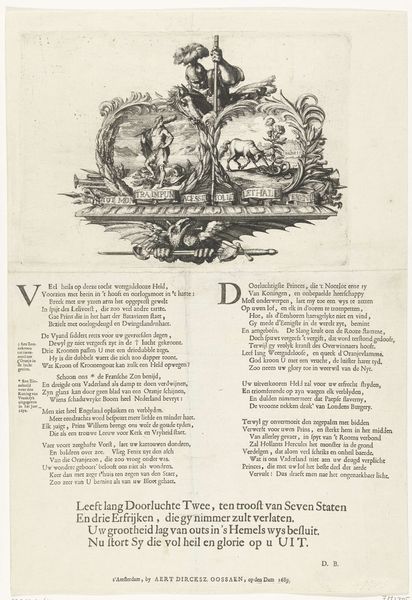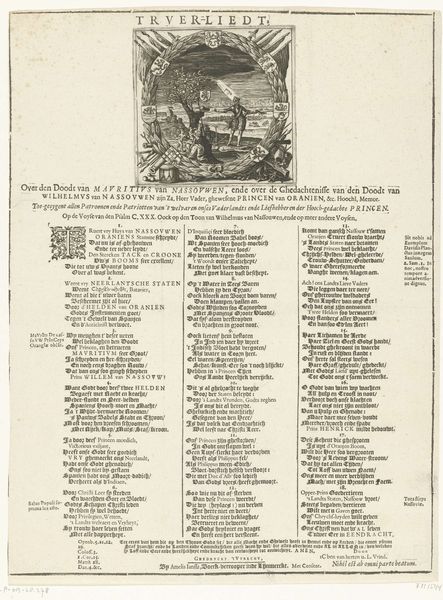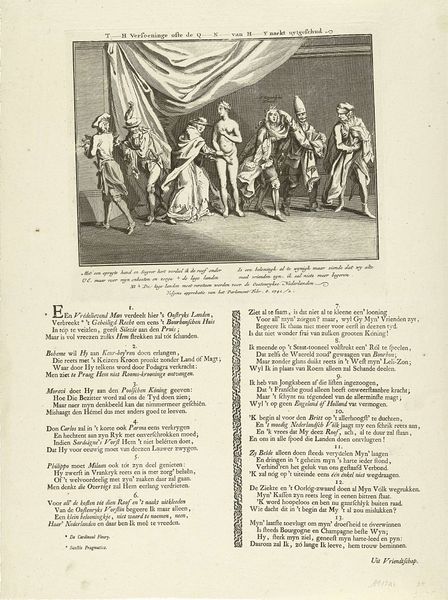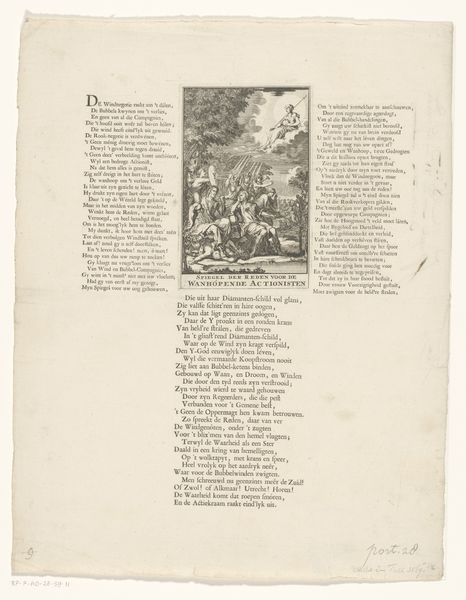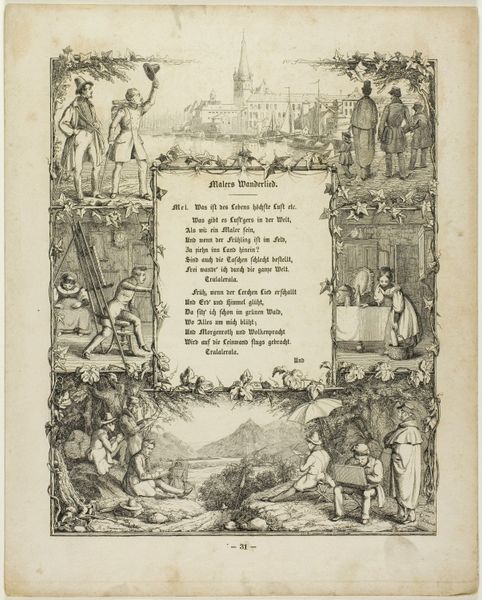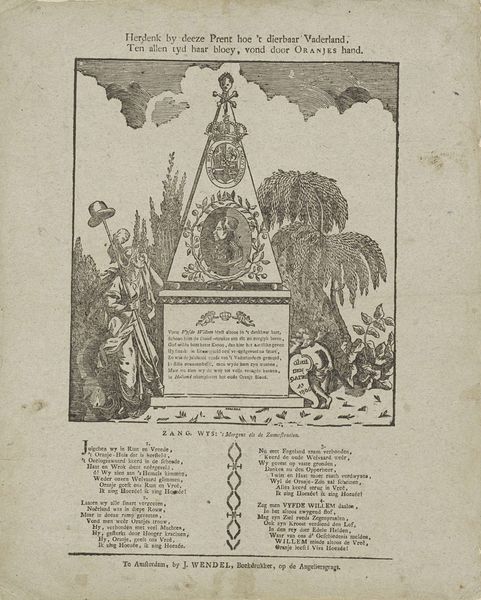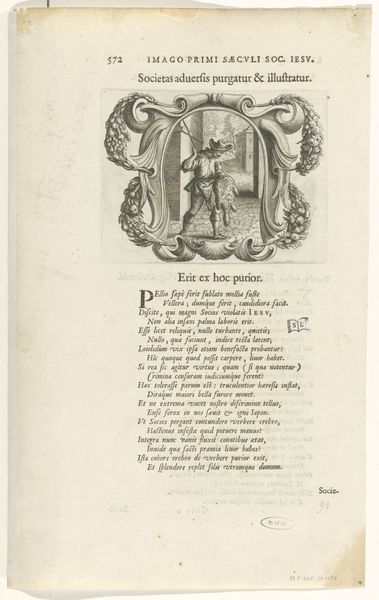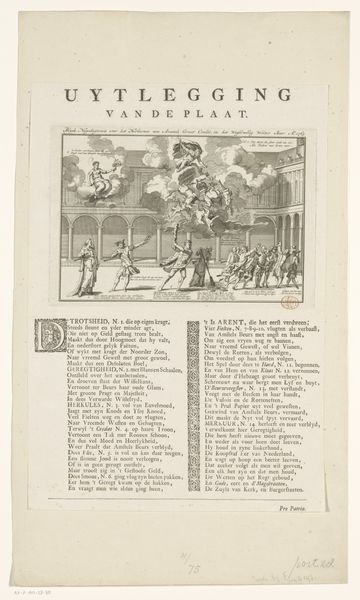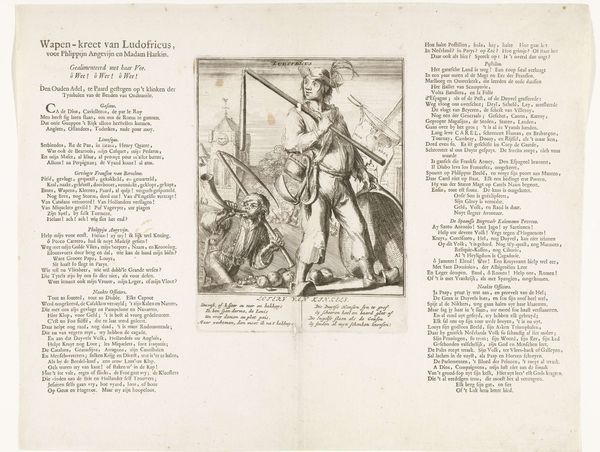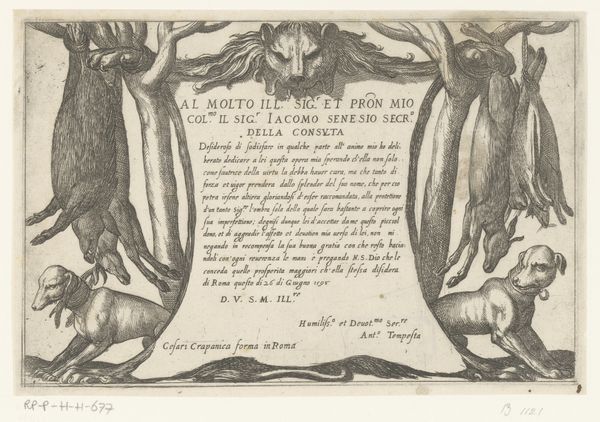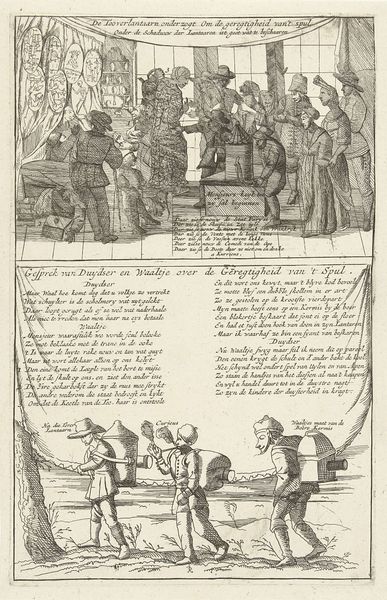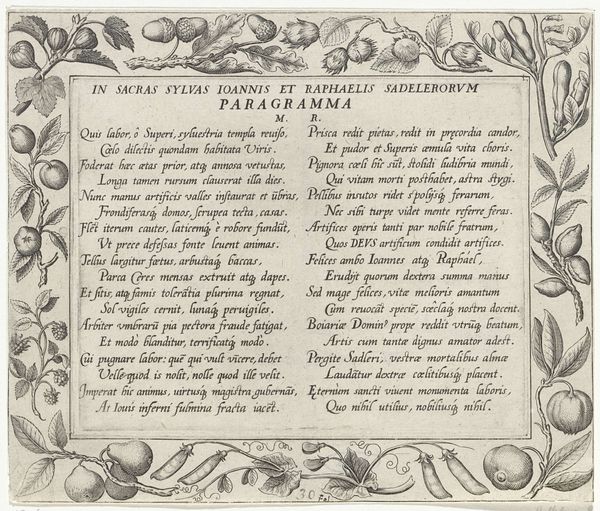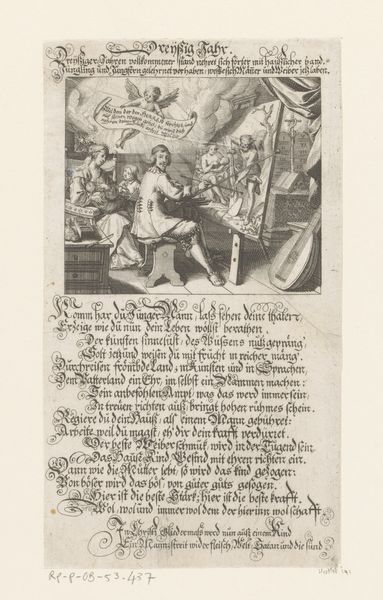
graphic-art, print, engraving
#
graphic-art
#
baroque
#
dutch-golden-age
# print
#
old engraving style
#
engraving
Dimensions: height 364 mm, width 213 mm
Copyright: Rijks Museum: Open Domain
Curator: This engraving, "Gedicht op de Beurs van Hendrik de Keyser," created in 1643 by Cornelis Visscher, immediately strikes me with its intricate detail. It feels quite symbolic. What stands out to you? Editor: I’m fascinated by how detailed and textured this print is, despite just being an engraving. I’m curious how its message connects to its method. What can you tell me about it? Curator: Look at how Visscher used the engraving process itself to represent and, arguably, validate the Dutch Golden Age's economic structures. The poem celebrates Amsterdam's stock exchange—but consider the materiality of the engraving itself. It’s a *reproduction,* meant for wide distribution. Editor: So, by reproducing this image on a larger scale and distributing to the masses, its commercial and capitalistic intent becomes part of the art. Curator: Precisely! This links artistic labor and the very trade being depicted. Engravings like this were commodities, reflecting the era’s burgeoning market economy. Note the contrast: while extolling trade and wealth, it participates *in* it, showcasing how artistic production and the culture are linked. Editor: The architectural motifs, then, also speak to these themes: it literally builds a framework around the poem. Curator: Good point. The ornamentation surrounding the poem becomes part of the broader context: building not just meaning but an economic and cultural edifice around the Amsterdam exchange. Editor: It is fascinating to think about the relationship between the printmaking process and the ideas it is trying to convey about wealth and trade. It gives me much food for thought. Curator: Indeed. Recognizing these material connections enhances our understanding of both the artwork and the era it represents.
Comments
No comments
Be the first to comment and join the conversation on the ultimate creative platform.
